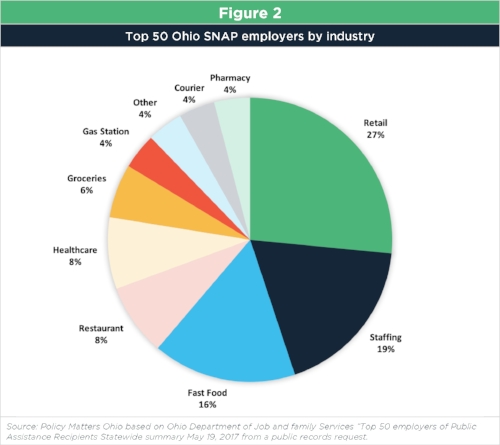What better place for a talk than in a food bank warehouse?
This spring I spent my time talking about Big Hunger in blue islands floating in a sea of red: in places such as Warren, Ohio; Pittsburgh, PA; Detroit, MI; Morgantown, WV; Fresno CA; Stockton, CA; Tulare County, CA; Carrboro, NC; Hendersonville, NC; and Columbia SC.
Here are a few insights:
Youngstown, Ohio: I hadn’t been back to my hometown for about a decade. While downtown is recovering from its 30 year economic doldrums, with new stores, hotels, and even condos, the rest of the city is a shell of what I remember: vast stretches of empty lots, boarded up homes, only one supermarket in the city, and an endless array of dollar stores. Yet there were signs of resilience and rebirth. The Lake to River Cooperative is an inviting meeting space and store, where one can grab a healthy lunch and buy local produce. In nearby Warren, the Trumbull County Neighborhood Partnership deployed a Community Food Projects planning grant to create a Community Food Security strategic plan for the city of 40,000, which suffers from a 35% poverty rate. Interestingly, Trumbull County is one place which flipped from blue to red in the 2016 election, for the first time since 1972.
You know times are tough in Youngstown when even the predatory lenders can't make it.
North Carolina: The hunger industrial complex is alive and kicking in NC. Smithfield Foods, now owned by a Chinese firm that is the largest pork producer in the world, lost a nuisance lawsuit to residents near one of its hog CAFOs, who complained about the impacts of the manure lagoon on their health. This lawsuit, with 25 similar ones pending, brought to the public attention the horrific health impacts that hog factories have on rural communities, in which millions of gallons of hog manure fester in outdoor lagoons and are sprayed onto fields, poisoning nearby residents with ammonia and methane. In a classic case of environmental racism, the majority of residents around hog farms in NC tend to be African Americans and Latinos, according to a UNC study. To improve its image and dispose of its overproduction, Smithfield Farms has been donating tens of thousands of pounds of pork products to food banks around the country.
Hog manure lagoon
Are food banks just doing their job and acquiring food wherever they can to feed the nation’s poorest residents? Or are they complicit in whitewashing and perpetuating environmental racism? Should food banks apply ethical standards in accepting food and money?
Killer views of the Sierras and orange orchards from Tulare Foodlink
Fresno and Tulare County, CA: I gave two talks in the San Joaquin Valley, America’s fruit and nut basket: one at Fresno State University and another at Tulare Foodlink. These counties are among the poorest and hungriest counties in the state, with high degree of health disparities. Fresno has the highest poverty rate in the state at 25.6% with Tulare County next with 25.2%. Great wealth and power inequalities exist between the impoverished, many of which are farmworkers, and corporate farms. These power relations also transfer over to the emergency food system. For example, one Tulare County food pantry that serves some of the most impoverished residents in the County allegedly received a load of extremely poor quality food from their local food bank, prompting them to call the food bank to ask “Is this the best that we deserve?” They knew that other food pantries in better-off communities, that were more politically connected were receiving high quality food from the food bank. The quality of the food given to the powerless and marginalized persons communicates to what degree they are valued, and treated as equals to evreyone else in society.































